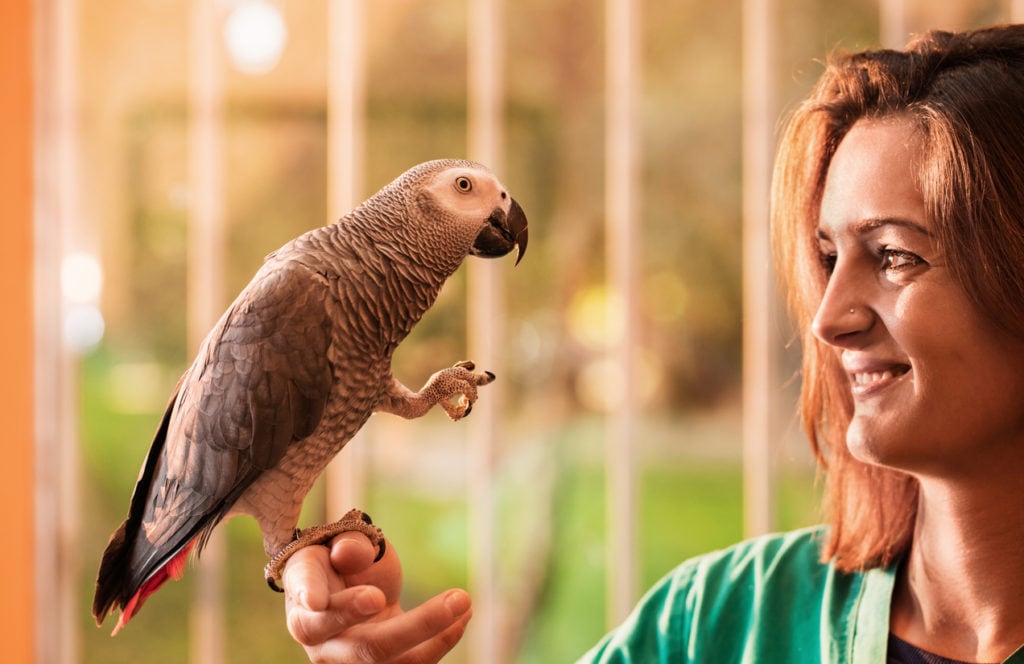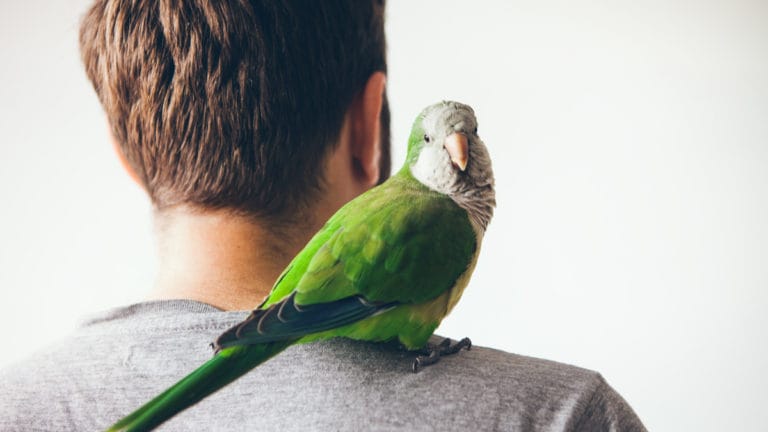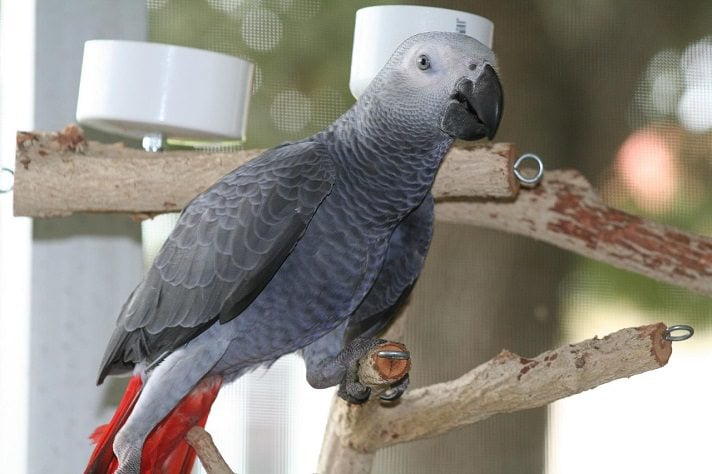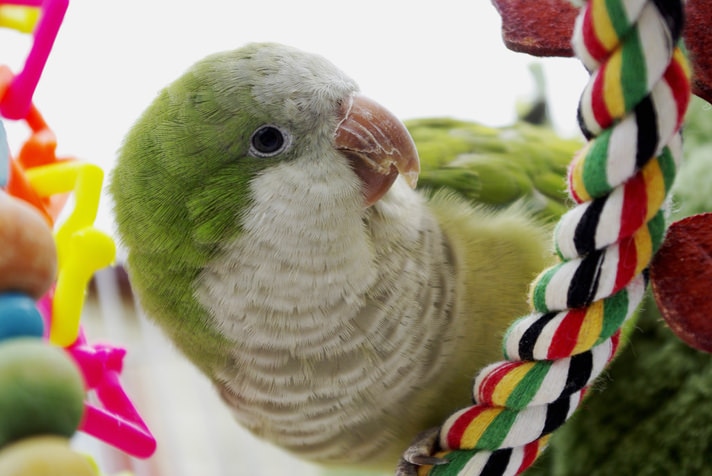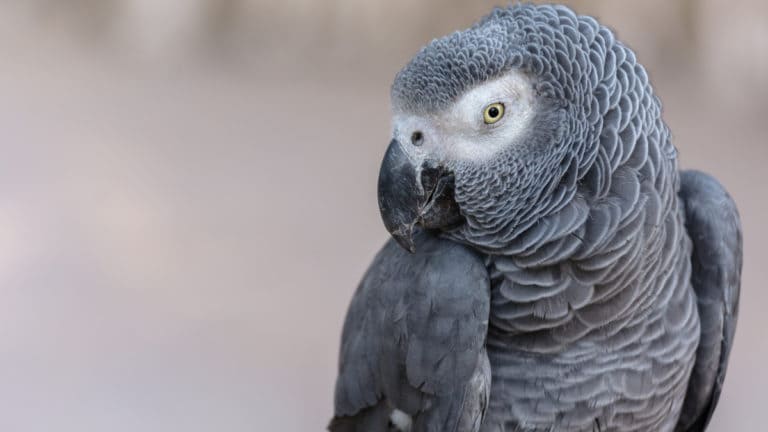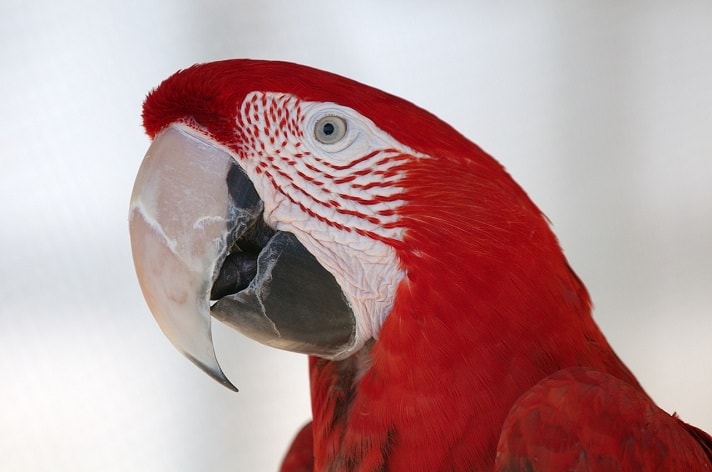While any parrot might enjoy the following behaviors, some species appear to develop them naturally. Some genetic lines may exhibit inherited or learned behaviors representative of their heredity. Ask your bird breeder to describe typical behaviors in species they breed.
Bathing aversion: While most parrots appear to love being sprayed, African greys, Poicephalus, Australian grass parakeets and some other desert birds have a reputation for hating it, a behavior that can be learned under aversive circumstances. These birds may often respond favorably to bathing in clear, shallow containers of water, especially in the presence of ice or floating toys.
Beating up toys: While almost any parrot might identify a particular toy or type of toy as a surrogate enemy (a toy that the bird likes to beat up), different species may prefer different types of toys for this purpose. For example, budgies might want to attack a round-bottom penguin- or budgie-shaped toy that is attached to the floor or perch, other parrot types might prefer to bang a heavy metal bell or toy against the side of bird cages.
Chasing: Cockatoos, quaker parrots and Amazons appear to chase for fun. However, this activity may also be related to territorialism, such as floor territorialism in the case of toe chasing.
Dancing: Swaying back and forth and/or head bobbing might be related to heredity or might be learned by almost any parrot. “Snaky?dancing occurs naturally in many lories, for example. Others known to get their groove on include cockatoos, conures, caiques and macaws.
Foot toy play: Most parrots naturally take to playing with foot toys. Cockatoos and Amazons are especially mechanical, but even lovebirds and quaker parrots with no reputation or predisposition to playing with foot toys can learn to play with foot toys when introduced at an early age.
Grudge pooping: While lories are infamous for intentionally pooping on unfavored humans, I have seen this behavior in lovebirds and budgies.
Hair pulling: Any parrot seeking human attention might do this if it can get to hair, but macaws, Amazons, cockatoos and lories are famous for “fly-by” hair pulling.
Hanging upside down: Hanging parrots, of course, have a penchant for hanging, but so do Poicephalus, Pyrrhura conures, lories, Eclectus and any other parrot that figures out that it? fun to hang upside down.
Hops and goofy hopping gate: Lories and caiques are notorious for hopping like kangaroos.
Juggling toys with feet: Goffin? cockatoo, Poicephalus, caiques, conures.
Hair Surfing: in hair, wet or otherwise, is reported in cockatiels, caiques, budgies and other species allowed access to human heads.
Night frights: cockatiels, occasionally cockatoos and African greys. Provide a night light.
Night screaming: Unless they are in real trouble, most parrots, except cockatoos, probably don? vocalize in the dark.
Night singing: Amazons (especially pairs)
Mating behavior during the night and hormonal display: African grey parrots
Quaking: This characteristic behavior is specific to quaker parrots; juveniles, health compromised adults, or any quaker that has been reinforced early in this behavior.
Paper shredding: Most parrots enjoy shredding paper, whether it be your cockatiel biting off a corner of your son? homework or an Amazon tearing up a paper bag from the inside out.
Resonating: Cockatiels, cockatoos, African greys, macaws and Amazons are famous for sticking their heads in corners, inside empty bowls or toys and listening intently to the reverberations of their calls or other vocalizations. This may be related to males seeking breeding cavities, or it might just be fun.
Running around fussing: This is very common smaller parrots, especially lovebirds and budgies, but larger parrots such as macaws and cockatoos are reported to march, prance or stomp around.
Sleeping on back: Many young parrots do this, especially Poicephalus and Pyrrhura.
Hormonal play: Masturbation style varies by species, but may include winking (opening and closing of the cloaca), rubbing the cloaca against things or unusual posture or positioning of tail.
Tail pulling: The enjoyment of tail pulling may be exclusively related to macaws, as most types of parrots can be thrown into a fight-or-flight (fear) response if their tails are merely touched.
Throwing things: Cockatoos and other parrots might throw things when they wish. (Other parrots might drop things, but a cockatoo might throw them.)
Weaving: Mostly specific to quaker parrots, although some lovebird species build nests inside a cavity, and carry strips of paper tucked in their back feathers, just above the tail.
Read More:
Bird Body Language 101
Top 10 Cockatiel Questions Answered
Posted by: Chewy Editorial
Share:
